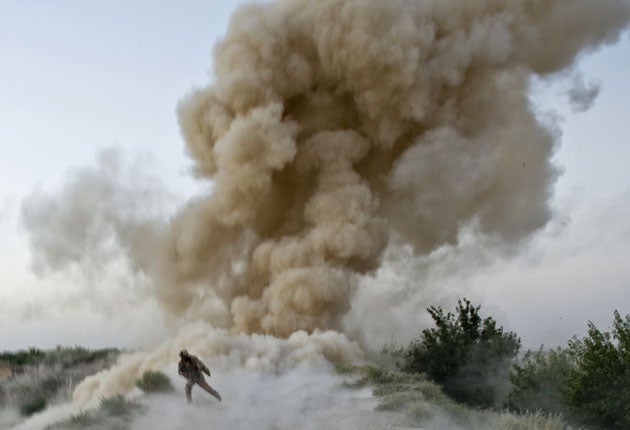Taliban make 'undetectable' bombs out of wood

Your support helps us to tell the story
From reproductive rights to climate change to Big Tech, The Independent is on the ground when the story is developing. Whether it's investigating the financials of Elon Musk's pro-Trump PAC or producing our latest documentary, 'The A Word', which shines a light on the American women fighting for reproductive rights, we know how important it is to parse out the facts from the messaging.
At such a critical moment in US history, we need reporters on the ground. Your donation allows us to keep sending journalists to speak to both sides of the story.
The Independent is trusted by Americans across the entire political spectrum. And unlike many other quality news outlets, we choose not to lock Americans out of our reporting and analysis with paywalls. We believe quality journalism should be available to everyone, paid for by those who can afford it.
Your support makes all the difference.Taliban fighters have developed a deadly new generation of their most lethal weapon, the improvised explosive device, or IED, which is almost undetectable because it has no metal or electronic parts, military experts said last week.
IEDs have proved the Taliban's most deadly weapon: three out of five coalition troops killed last year in Afghanistan were victims of the bombs. At least 48 of the 108 British fatalities were caused by IEDs.
Chris Hunter, a former bomb disposal expert who served in Iraq and now runs his own consultancy said the new weapons were being manufactured from wood in Pakistan.
"The expertise for this new generation of bombs is likely to be coming from foreign fighters from places such as Chechnya," he said. "But they are being mass produced in Pakistan and are being wheeled out on an industrial level. You see them everywhere."
Earlier in the war, IEDs would be mostly triggered by two hack-saw blades separated using a spacer. When the blades were stepped on or driven over they would complete an electronic circuit which so detonated the explosive – often an artillery shell.
Mr Hunter added that the metal saw blades have now also been replaced with graphite blades and the artillery shells with ammonium nitrate. The damage is caused by the power of the blast rather than metal fragments, or shrapnel.
The number of IEDs used in Afghanistan has increased by 400 per cent since 2007 and the number of troops killed by them by 400 per cent, and those wounded by 700 per cent according to a report by a US group called Homeland Security Market Research.
One brigade commander posted to Afghanistan said that sniffer dogs were the most reliable way of detecting IEDs, but this method took a long time and required a lot of animals. Already convoys have to move at very slow speeds while roads ahead are checked for explosives.
He added his troops were becoming "IED-shy", because of the stress levels created by this new generation of weapons.
Join our commenting forum
Join thought-provoking conversations, follow other Independent readers and see their replies
Comments